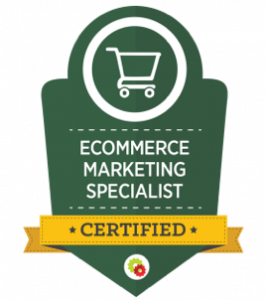MARKETING
10 Strategies to Mastering Social Media for Ecommerce

Social media has become an indispensable tool for businesses in today’s digital age. You need it to connect with your target audience, boost your brand’s visibility, and drive sales.
But most businesses and even beginner marketers don’t fully understand how to use social media for ecommerce.
If you’re one of them, we’ve got you covered.
Whether you’re new to social media or looking to enhance your existing social media strategy for ecommerce, this blog is here to help.
We’ve compiled ten effective social media ecommerce strategies that can propel your brand to new heights. So, grab your favorite snack, sit back, and get ready to unlock the potential of social media for your ecommerce business.
Let’s get started!
What is Ecommerce Social Media Marketing?
Ecommerce social media marketing refers to the strategic use of social media platforms to promote, sell, engage, and support customers in the context of ecommerce.
Some of the most common ways brands use social media for ecommerce marketing include:
- Setting up online shops and selling products directly on social platforms (this is known as social commerce)
- Promoting brands on social media accounts and driving traffic to online stores (ecommerce websites)
- Replying to customer queries and engaging with potential customers to build trust
- Offering customer support before and after sales
- Using customer insights and data to revamp marketing strategies
But why do brands do all of this? What’s the benefit of having a social media presence? Let’s try to understand.

What Are the Benefits of Using Social Media for Ecommerce?
Social media is a game-changer for ecommerce businesses, offering a wide array of benefits, such as:
- Increasing Website Traffic & Generating Leads
- To Build Brand Awareness
- Building Customer Loyalty & Trust
- Acquiring New Customers
- Creating Opportunities for User-Generated Content (UGC)
- Improving Customer Service
- Engaging with Target Audiences in Real-Time
- Enhancing SEO Efforts & Search Rankings
Fact: Did you know that online stores leveraging social media networks drive 32% more sales than those that don’t? (WPForms)
This stat alone should get you excited about crafting an effective social media strategy for your ecommerce business!
So, now that you know what ecommerce social media marketing is and the benefits it offers let’s look at how to use it.
10 Powerful Social Media Ecommerce Strategies
Here are ten powerful social media ecommerce strategies you can employ to drive sales for your brand:
1. Set Clear Goals
Setting clear and measurable goals should be the first step in your social media ecommerce strategy. Goals will provide you with direction, help measure success, and hold you accountable.
But what kind of goals should you set?
The most common ones can be:
- Drive Sales on Your Social Profile
- Drive Traffic to Your Ecommerce Store
- Get More Customer Queries/Leads
Other than these, you might want people to subscribe to your newsletter or loyalty programs.
These and other similar targets could all be part of your e-commerce social media goals.
But the important thing here is to decide whether you want to do social selling, social commerce, or social media ecommerce marketing.

Social Selling vs. Social Commerce vs. Social Media Ecommerce: What’s the Difference?
Social selling is the practice of using social media to attract your target audience, engage with them, and nurture your relationship with them.
You don’t actually sell them anything but make them remember and trust your brand or business. So, when they’re in the buying mode, they know who they’d be calling – that’s social selling!
Social commerce involves marketing and selling your product (or service) directly on social media platforms.
Social media users can stay on their social profiles, read about the product/service, and buy it — all of this without leaving the platform.
Facebook, TikTok, Instagram Shops and Pinterest Product Pins are typical examples of social commerce being executed.
Social media ecommerce marketing is what we’re studying in the blog right now: marketing your product, generating leads, and helping future prospects on social media but then driving them to your online stores.
So, first, decide what it’s gonna be for you and then move forward.
2. Build Your Social Media Strategy for Ecommerce
After you’ve set your goals, build a comprehensive ecommerce social media marketing strategy that helps you achieve them.
Your strategy should include the following:
Define Your Target Audiences
- Who are your potential customers?
- Are they millennials or Gen Z?
- What do they like and dislike?
- What interests them?
These insights will help you create relevant content, campaigns, and offers.

Become A Certified E-Commerce Marketing Master
The Industry’s Most Comprehensive E-Commerce Marketing Certification For The Modern Marketer. Turn Products Into Profit, Browsers Into Buyers, & Past Purchasers Into Life-Long Customers.
Create Relevant Content
- Research the type of content that resonates best with your target audiences — blogs, videos, images?
- Study your target market and see what kind of content attracts them.
- Use this knowledge to create content that will help you engage with them.
But before you can do any of this, there’s an even more important decision to make: “What platforms should you choose?”
3. Choose Your Preferred Social Media Channels
Which social media platforms should your business have an active presence on?
This largely depends on who you’re targeting. For example, Gen Zee tends to be more active on TikTok and Instagram, while millennials prefer Facebook and Twitter.
But don’t depend on our or somebody else’s opinion. Study your target audience and see what the data suggests.
For instance, if your target audience primarily comprises women, it might be a good idea to have a Pinterest profile. Why? Because women make up 60% of all Pinterest users!
Similarly, you can study age demographic stats and see where your audience spends the most time and choose a platform accordingly.
Besides your target audience, also consider each platform’s features and ROI. It doesn’t make sense to invest heavily in a channel that won’t give you the desired results.
So, think carefully and choose wisely!
4. Optimize Your Profiles
Once you’ve chosen the platform(s), it’s time to optimize your profile.
Make sure that all your social media profiles have the necessary information about your brand and products, such as its logo, contact details, website URL, etc.


This will help customers get to know your business better and trust you more.
Also, don’t forget to do proper keyword research. It will help you figure out the best words to use in your descriptions and hashtags to use in your posts to get more people interested.
5. Have a “Mobile-First” Approach
Out of 4.48 billion social media users, 99% access the websites or apps through a mobile device – backlinko.
What does it tell you?
You must adapt your ecommerce strategy accordingly and make sure that all content looks great on small screens too.
Here are some tips to optimize your social media accounts:
- Invest in creating high-quality visuals that look great on small screens.
- Make sure your website is mobile responsive, and the checkout process is easy to complete.
- Utilize mobile advertising tools like Facebook Ads, Instagram Ads, etc.
- Use shorter hashtags and URLs to make them easier to tap or type on mobile keyboards.
- Use a clear call-to-action in your posts so that users can take action right away.
Important: Having a responsive and easy-to-navigate ecommerce website is super important – don’t sleep on it!
6. Employ Chatbots
Chatbots are like your brand’s trusty sidekick in the world of social media ecommerce!
Did you know that around 50% of people are totally on board with making a purchase through a website’s chatbot using conversational marketing? That’s right! These friendly virtual assistants can offer personalized and real-time assistance to your customers, making their shopping experience a breeze.
Need product recommendations? Chatbot’s got you covered!
Have a question about shipping? Chatbot’s got the answer!
By having chatbots as part of your social media ecommerce strategy, you can provide instant support, boost engagement, and, most importantly, drive those all-important sales.
So, why not harness the power of chatbots and make your customers’ journey even more enjoyable?
7. Leverage UGC (User-Generated Content)
UGC refers to content created by your customers, such as reviews, testimonials, photos, and videos featuring your products.
It’s one of the most powerful tools for driving engagement and boosting sales.
Why?
- It’s like having an army of brand advocates who are eager to spread the word about your offerings.
- UGC showcases real-life experiences and authentic customer interactions with your brand.
- It builds trust and credibility among your target audience as it comes from real customers.


Plus, it’s not just about showing off your products – it’s about making customers feel part of a community. It shows that you value their input and recognize their contribution to the brand.
So, why not include UGC in your social media ecommerce strategy?
Encourage your followers to post pictures with their purchases, use relevant hashtags, and provide incentives for doing so.
8. Publish Short-Form Content
Today, short-form content reigns supreme! With dwindling attention spans, social media users prefer watching short, 30sec-1min videos instead of reading text.
This is exactly what brands need to capitalize on and capture their audience’s interest quickly and effectively.
But what kind of short-form content can you create to engage your social media followers? Here are some ideas for short-form content:
- Tips & Tricks: Share bite-sized advice and hacks relevant to your industry.
- How-Tos: Break down complex processes into step-by-step guides.
- Behind the Scenes: Offer glimpses into your brand’s inner workings.
- Quick Product Demos: Showcase your products’ features and benefits in short videos.
- Inspiring Stories: Share stories that evoke emotions and inspire action.
Remember to keep your content visually appealing, concise, and shareable.
Try different formats like Reels, Stories, or TikTok-style videos to maximize engagement and captivate your audience instantly!
9. Collaborate with Influencers
Did you know that a whopping 72% of Gen Z and Millennials are avid followers of influencers on social media? That’s right!
Influencer marketing has taken the digital world by storm, and it’s an incredible opportunity for ecommerce brands like yours to connect with your target audience in a meaningful way.
Here’s how you can incorporate influencer marketing into your ecommerce marketing plan:
- Find Relevant Influencers: Look for influencers who align with your brand values and target audience.
- Set Clear Objectives: Define your goals for the influencer campaign to guide your strategy.
- Prioritize Authenticity: Encourage influencers to create genuine content that resonates with their audience.
- Foster Creative Collaboration: Involve influencers in the creative process to showcase your products in their unique style.
- Track Performance: Measure the success of your campaigns using tracking tools and unique discount codes.
- Consider Long-term Partnerships: Build strong relationships with influencers for ongoing brand integration and audience connection.


By collaborating with influencers, you can amplify your brand’s reach, enhance credibility, and drive meaningful results in the competitive ecommerce landscape.
10 . Track Progress & Evolve
Tracking and analyzing the results of your social media ecommerce strategies is vital for ongoing success.
Analytics tools can give you valuable insights into audience demographics, reach, and engagement.
Platforms like Facebook, Instagram, and Twitter provide built-in analytics dashboards to assess post performance. Use them to understand audience behavior and analyze what’s working for you.
Similarly, monitoring ad performance is especially important if you’re selling directly on social media. Tracking metrics such as click-through rates, conversion rates, and sales will help you assess the effectiveness of your ads and make data-driven decisions.
Besides analyzing your social media posts, keep a close on your website analytics (Google Analytics) to measure the impact of your social media campaigns. See which platform gets you the most traffic and which one’s not doing the job.



Become A Certified E-Commerce Marketing Master
The Industry’s Most Comprehensive E-Commerce Marketing Certification For The Modern Marketer. Turn Products Into Profit, Browsers Into Buyers, & Past Purchasers Into Life-Long Customers.
But remember, tracking progress isn’t just about numbers; it’s about understanding your audience and their preferences.
Use the data to identify patterns, trends, and customer behaviors that can shape your future strategies. Adapt and evolve your approach based on these insights to ensure continued success in the dynamic world of social media.
Supercharge Your Ecommerce Journey with Social Media
So, this is it — use this 10-step strategy to build an effective ecommerce marketing plan on social media and drive real results for your brand.
If you find tracking progress and analyzing data challenging, consider completing Digital Marketer’s Social Media Certificate.
This short but in-depth program can help you master the art of creating an effective social media strategy for ecommerce to drive engagement and revenue for your business.
Sounds like too much work? Mongoose Media is an award-winning, modern digital marketing agency. They can develop & execute effective strategies to maximize your brand’s online presence and drive sales.
Don’t hesitate to reach out and take your ecommerce business to new heights!
MARKETING
Tinuiti Marketing Analytics Recognized by Forrester

Rapid Media Mix Modeling and Proprietary Tech Transform Brand Performance
Tinuiti, the largest independent full-funnel performance marketing agency, has been included in a recent Forrester Research report titled, “The Marketing Analytics Landscape, Q2 2024.” This report comprehensively overviews marketing analytics markets, use cases, and capabilities. B2C marketing leaders can use this research by Principal Analyst Tina Moffett to understand the intersection of marketing analytics capabilities and use cases to determine the vendor or service provider best positioned for their analytics and insights needs. Moffett describes the top marketing analytics markets as advertising agencies, marketing dashboards and business intelligence tools, marketing measurement and optimization platforms and service providers, and media analytics tools.
As an advertising agency, we believe Tinuiti is uniquely positioned to manage advertising campaigns for brands including buying, targeting, and measurement. Our proprietary measurement technology, Bliss Point by Tinuiti, allows us to measure the optimal level of investment to maximize impact and efficiency. According to the Forrester report, “only 30% of B2C marketing decision-makers say their organization uses marketing or media mix modeling (MMM),” so having a partner that knows, embraces, and utilizes MMM is important. As Tina astutely explains, data-driven agencies have amplified their marketing analytics competencies with data science expertise; and proprietary tools; and tailored their marketing analytics techniques based on industry, business, and data challenges.
Our Rapid Media Mix Modeling sets a new standard in the market with its exceptional speed, precision, and transparency. Our patented tech includes Rapid Media Mix Modeling, Always-on Incrementality, Brand Equity, Creative Insights, and Forecasting – it will get you to your Marketing Bliss Point in each channel, across your entire media mix, and your overall brand performance.
As a marketing leader you may ask yourself:
- How much of our marketing budget should we allocate to driving store traffic versus e-commerce traffic?
- How should we allocate our budget by channel to generate the most traffic and revenue possible?
- How many customers did we acquire in a specific region with our media spend?
- What is the impact of seasonality on our media mix?
- How should we adjust our budget accordingly?
- What is the optimal marketing channel mix to maximize brand awareness?
These are just a few of the questions that Bliss Point by Tinuiti can help you answer.
Learn more about our customer-obsessed, product-enabled, and fully integrated approach and how we’ve helped fuel full-funnel outcomes for the world’s most digital-forward brands like Poppi & Toms.
The Landscape report is available online to Forrester customers or for purchase here.
MARKETING
Ecommerce evolution: Blurring the lines between B2B and B2C

Understanding convergence
B2B and B2C ecommerce are two distinct models of online selling. B2B ecommerce is between businesses, such as wholesalers, distributors, and manufacturers. B2C ecommerce refers to transactions between businesses like retailers and consumer brands, directly to individual shoppers.
However, in recent years, the boundaries between these two models have started to fade. This is known as the convergence between B2B and B2C ecommerce and how they are becoming more similar and integrated.
Source: White Paper: The evolution of the B2B Consumer Buyer (ClientPoint, Jan 2024)
What’s driving this change?
Ever increasing customer expectations
Customers today expect the same level of convenience, speed, and personalization in their B2B transactions as they do in their B2C interactions. B2B buyers are increasingly influenced by their B2C experiences. They want research, compare, and purchase products online, seamlessly transitioning between devices and channels. They also prefer to research and purchase online, using multiple devices and channels.
Forrester, 68% of buyers prefer to research on their own, online . Customers today expect the same level of convenience, speed, and personalization in their B2B transactions as they do in their B2C interactions. B2B buyers are increasingly influenced by their B2C experiences. They want research, compare, and purchase products online, seamlessly transitioning between devices and channels. They also prefer to research and purchase online, using multiple devices and channels
Technology and omnichannel strategies
Technology enables B2B and B2C ecommerce platforms to offer more features and functionalities, such as mobile optimization, chatbots, AI, and augmented reality. Omnichannel strategies allow B2B and B2C ecommerce businesses to provide a seamless and consistent customer experience across different touchpoints, such as websites, social media, email, and physical stores.
However, with every great leap forward comes its own set of challenges. The convergence of B2B and B2C markets means increased competition. Businesses now not only have to compete with their traditional rivals, but also with new entrants and disruptors from different sectors. For example, Amazon Business, a B2B ecommerce platform, has become a major threat to many B2B ecommerce businesses, as it offers a wide range of products, low prices, and fast delivery
“Amazon Business has proven that B2B ecommerce can leverage popular B2C-like functionality” argues Joe Albrecht, CEO / Managing Partner, Xngage. . With features like Subscribe-and-Save (auto-replenishment), one-click buying, and curated assortments by job role or work location, they make it easy for B2B buyers to go to their website and never leave. Plus, with exceptional customer service and promotional incentives like Amazon Business Prime Days, they have created a reinforcing loyalty loop.
And yet, according to Barron’s, Amazon Business is only expected to capture 1.5% of the $5.7 Trillion addressable business market by 2025. If other B2B companies can truly become digital-first organizations, they can compete and win in this fragmented space, too.”
If other B2B companies can truly become digital-first organizations, they can also compete and win in this fragmented space
Joe AlbrechtCEO/Managing Partner, XNGAGE
Increasing complexity
Another challenge is the increased complexity and cost of managing a converging ecommerce business. Businesses have to deal with different customer segments, requirements, and expectations, which may require different strategies, processes, and systems. For instance, B2B ecommerce businesses may have to handle more complex transactions, such as bulk orders, contract negotiations, and invoicing, while B2C ecommerce businesses may have to handle more customer service, returns, and loyalty programs. Moreover, B2B and B2C ecommerce businesses must invest in technology and infrastructure to support their convergence efforts, which may increase their operational and maintenance costs.
How to win
Here are a few ways companies can get ahead of the game:
Adopt B2C-like features in B2B platforms
User-friendly design, easy navigation, product reviews, personalization, recommendations, and ratings can help B2B ecommerce businesses to attract and retain more customers, as well as to increase their conversion and retention rates.
According to McKinsey, ecommerce businesses that offer B2C-like features like personalization can increase their revenues by 15% and reduce their costs by 20%. You can do this through personalization of your website with tools like Product Recommendations that help suggest related products to increase sales.
Focus on personalization and customer experience
B2B and B2C ecommerce businesses need to understand their customers’ needs, preferences, and behaviors, and tailor their offerings and interactions accordingly. Personalization and customer experience can help B2B and B2C ecommerce businesses to increase customer satisfaction, loyalty, and advocacy, as well as to improve their brand reputation and competitive advantage. According to a Salesforce report, 88% of customers say that the experience a company provides is as important as its products or services.
Market based on customer insights
Data and analytics can help B2B and B2C ecommerce businesses to gain insights into their customers, markets, competitors, and performance, and to optimize their strategies and operations accordingly. Data and analytics can also help B2B and B2C ecommerce businesses to identify new opportunities, trends, and innovations, and to anticipate and respond to customer needs and expectations. According to McKinsey, data-driven organizations are 23 times more likely to acquire customers, six times more likely to retain customers, and 19 times more likely to be profitable.
What’s next?
The convergence of B2B and B2C ecommerce is not a temporary phenomenon, but a long-term trend that will continue to shape the future of ecommerce. According to Statista, the global B2B ecommerce market is expected to reach $20.9 trillion by 2027, surpassing the B2C ecommerce market, which is expected to reach $10.5 trillion by 2027. Moreover, the report predicts that the convergence of B2B and B2C ecommerce will create new business models, such as B2B2C, B2A (business to anyone), and C2B (consumer to business).
Therefore, B2B and B2C ecommerce businesses need to prepare for the converging ecommerce landscape and take advantage of the opportunities and challenges it presents. Here are some recommendations for B2B and B2C ecommerce businesses to navigate the converging landscape:
- Conduct a thorough analysis of your customers, competitors, and market, and identify the gaps and opportunities for convergence.
- Develop a clear vision and strategy for convergence, and align your goals, objectives, and metrics with it.
- Invest in technology and infrastructure that can support your convergence efforts, such as cloud, mobile, AI, and omnichannel platforms.
- Implement B2C-like features in your B2B platforms, and vice versa, to enhance your customer experience and satisfaction.
- Personalize your offerings and interactions with your customers, and provide them with relevant and valuable content and solutions.
- Leverage data and analytics to optimize your performance and decision making, and to innovate and differentiate your business.
- Collaborate and partner with other B2B and B2C ecommerce businesses, as well as with other stakeholders, such as suppliers, distributors, and customers, to create value and synergy.
- Monitor and evaluate your convergence efforts, and adapt and improve them as needed.
By following these recommendations, B2B and B2C ecommerce businesses can bridge the gap between their models and create a more integrated and seamless ecommerce experience for their customers and themselves.
MARKETING
Streamlining Processes for Increased Efficiency and Results

How can businesses succeed nowadays when technology rules? With competition getting tougher and customers changing their preferences often, it’s a challenge. But using marketing automation can help make things easier and get better results. And in the future, it’s going to be even more important for all kinds of businesses.
So, let’s discuss how businesses can leverage marketing automation to stay ahead and thrive.
Benefits of automation marketing automation to boost your efforts
First, let’s explore the benefits of marketing automation to supercharge your efforts:
Marketing automation simplifies repetitive tasks, saving time and effort.
With automated workflows, processes become more efficient, leading to better productivity. For instance, automation not only streamlines tasks like email campaigns but also optimizes website speed, ensuring a seamless user experience. A faster website not only enhances customer satisfaction but also positively impacts search engine rankings, driving more organic traffic and ultimately boosting conversions.
Automation allows for precise targeting, reaching the right audience with personalized messages.
With automated workflows, processes become more efficient, leading to better productivity. A great example of automated workflow is Pipedrive & WhatsApp Integration in which an automated welcome message pops up on their WhatsApp
within seconds once a potential customer expresses interest in your business.
Increases ROI
By optimizing campaigns and reducing manual labor, automation can significantly improve return on investment.
Leveraging automation enables businesses to scale their marketing efforts effectively, driving growth and success. Additionally, incorporating lead scoring into automated marketing processes can streamline the identification of high-potential prospects, further optimizing resource allocation and maximizing conversion rates.
Harnessing the power of marketing automation can revolutionize your marketing strategy, leading to increased efficiency, higher returns, and sustainable growth in today’s competitive market. So, why wait? Start automating your marketing efforts today and propel your business to new heights, moreover if you have just learned ways on how to create an online business
How marketing automation can simplify operations and increase efficiency
Understanding the Change
Marketing automation has evolved significantly over time, from basic email marketing campaigns to sophisticated platforms that can manage entire marketing strategies. This progress has been fueled by advances in technology, particularly artificial intelligence (AI) and machine learning, making automation smarter and more adaptable.
One of the main reasons for this shift is the vast amount of data available to marketers today. From understanding customer demographics to analyzing behavior, the sheer volume of data is staggering. Marketing automation platforms use this data to create highly personalized and targeted campaigns, allowing businesses to connect with their audience on a deeper level.
The Emergence of AI-Powered Automation
In the future, AI-powered automation will play an even bigger role in marketing strategies. AI algorithms can analyze huge amounts of data in real-time, helping marketers identify trends, predict consumer behavior, and optimize campaigns as they go. This agility and responsiveness are crucial in today’s fast-moving digital world, where opportunities come and go in the blink of an eye. For example, we’re witnessing the rise of AI-based tools from AI website builders, to AI logo generators and even more, showing that we’re competing with time and efficiency.
Combining AI-powered automation with WordPress management services streamlines marketing efforts, enabling quick adaptation to changing trends and efficient management of online presence.
Moreover, AI can take care of routine tasks like content creation, scheduling, and testing, giving marketers more time to focus on strategic activities. By automating these repetitive tasks, businesses can work more efficiently, leading to better outcomes. AI can create social media ads tailored to specific demographics and preferences, ensuring that the content resonates with the target audience. With the help of an AI ad maker tool, businesses can efficiently produce high-quality advertisements that drive engagement and conversions across various social media platforms.
Personalization on a Large Scale
Personalization has always been important in marketing, and automation is making it possible on a larger scale. By using AI and machine learning, marketers can create tailored experiences for each customer based on their preferences, behaviors, and past interactions with the brand.
This level of personalization not only boosts customer satisfaction but also increases engagement and loyalty. When consumers feel understood and valued, they are more likely to become loyal customers and brand advocates. As automation technology continues to evolve, we can expect personalization to become even more advanced, enabling businesses to forge deeper connections with their audience. As your company has tiny homes for sale California, personalized experiences will ensure each customer finds their perfect fit, fostering lasting connections.
Integration Across Channels
Another trend shaping the future of marketing automation is the integration of multiple channels into a cohesive strategy. Today’s consumers interact with brands across various touchpoints, from social media and email to websites and mobile apps. Marketing automation platforms that can seamlessly integrate these channels and deliver consistent messaging will have a competitive edge. When creating a comparison website it’s important to ensure that the platform effectively aggregates data from diverse sources and presents it in a user-friendly manner, empowering consumers to make informed decisions.
Omni-channel integration not only betters the customer experience but also provides marketers with a comprehensive view of the customer journey. By tracking interactions across channels, businesses can gain valuable insights into how consumers engage with their brand, allowing them to refine their marketing strategies for maximum impact. Lastly, integrating SEO services into omni-channel strategies boosts visibility and helps businesses better understand and engage with their customers across different platforms.
The Human Element
While automation offers many benefits, it’s crucial not to overlook the human aspect of marketing. Despite advances in AI and machine learning, there are still elements of marketing that require human creativity, empathy, and strategic thinking.
Successful marketing automation strikes a balance between technology and human expertise. By using automation to handle routine tasks and data analysis, marketers can focus on what they do best – storytelling, building relationships, and driving innovation.
Conclusion
The future of marketing automation looks promising, offering improved efficiency and results for businesses of all sizes.
As AI continues to advance and consumer expectations change, automation will play an increasingly vital role in keeping businesses competitive.
By embracing automation technologies, marketers can simplify processes, deliver more personalized experiences, and ultimately, achieve their business goals more effectively than ever before.
-

 SEARCHENGINES7 days ago
SEARCHENGINES7 days agoGoogle Core Update Volatility, Helpful Content Update Gone, Dangerous Google Search Results & Google Ads Confusion
-

 SEO7 days ago
SEO7 days ago10 Paid Search & PPC Planning Best Practices
-

 MARKETING5 days ago
MARKETING5 days ago5 Psychological Tactics to Write Better Emails
-

 SEARCHENGINES5 days ago
SEARCHENGINES5 days agoWeekend Google Core Ranking Volatility
-

 SEO6 days ago
SEO6 days agoWordPress Releases A Performance Plugin For “Near-Instant Load Times”
-

 MARKETING6 days ago
MARKETING6 days agoThe power of program management in martech
-
SEARCHENGINES4 days ago
Daily Search Forum Recap: April 15, 2024
-

 PPC5 days ago
PPC5 days ago20 Neuromarketing Techniques & Triggers for Better-Converting Copy
















